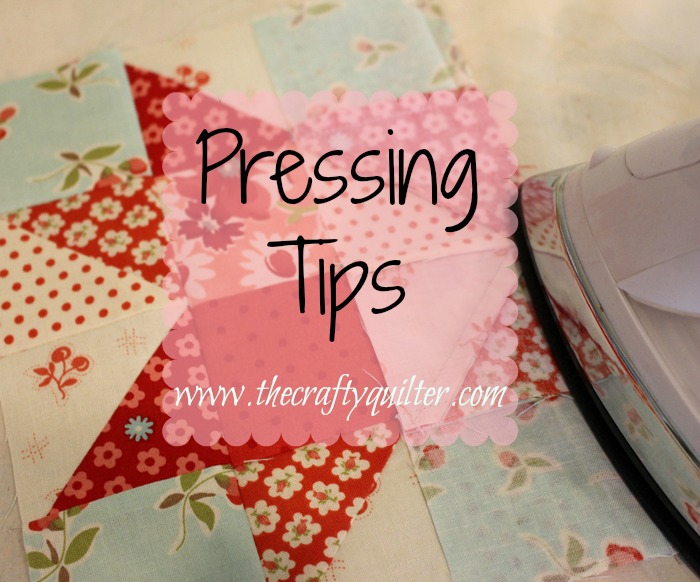 Have you ever wondered if it was important to "set your seams" when you are putting your blocks together?
Have you ever wondered if it was important to "set your seams" when you are putting your blocks together?
Here's the answer from Julie at www.TheCraftyQuilter.com.
 Have you ever wondered if it was important to "set your seams" when you are putting your blocks together?
Have you ever wondered if it was important to "set your seams" when you are putting your blocks together?
Here's the answer from Julie at www.TheCraftyQuilter.com.
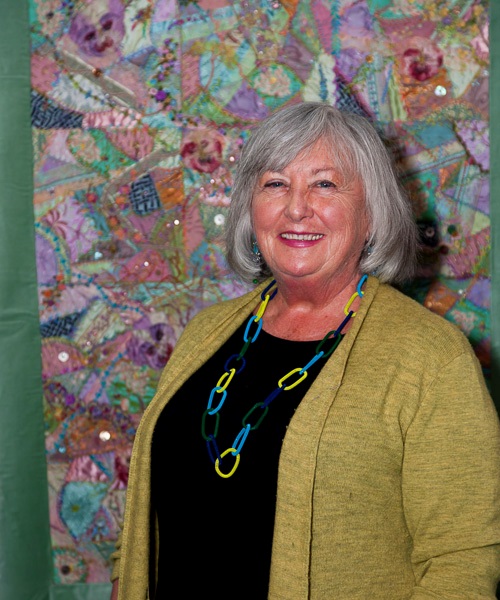
Alex and Ricky welcome back fiber artist, author, and teacher Judith B. Montano for her third TQS appearance (Episodes 201 and 507), this time on location at The Old Exchange and Provost in beautiful downtown Charleston, SC. This time around, Judith discusses her Canadian upbringing, and the influences of both the Hutterites and Canada's native peoples on her early work. She then shares her techniques for distorting traditional stitches to create organic shapes and interesting layers, and how she employs cheesecloth, scrim, and other unique materials in her pieces, incorporating painterly techniques along the way.
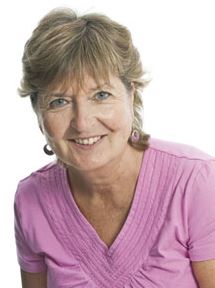
Finally, in a segment taped in Sisters, OR, we meet UK quilter, Karin Hellaby, who offers a brief history of Pineapple quilts and shows her "Sew Simple" technique for creating a Pineapple block.
What is the Maker Faire? According to their website at www.makefaire.com, it is part science fair, part county fair, and part something entirely new, Maker Faire is an all-ages gathering of tech enthusiasts, crafters, educators, tinkerers, hobbyists, engineers, science clubs, authors, artists, students, and commercial exhibitors. All of these "makers" come to Maker Faire to show what they have made and to share what they have learned.
Enjoy just a bit of the Maker Faire San Mateo 2013 from a "textile and craft" perspective.

Is it just me, or have some of you found that the active life and quilting do not co-exist peacefully?
I want to be an art quilter. That takes time. It requires long periods of sitting, thinking, dreaming, sketching, and finally sewing. Moving from the sewing machine to the ironing board is not mentioned on the American Heart Association's list of recommended exercise. And after a while, sitting for long periods of time is actually not very comfortable.
On the other hand, I want to be healthy. Regular exercise is a very important part of good health. And exercise takes time too! Somehow I've got to figure out how to intermingle these two disparate parts of my life into one healthy balanced life.
Here are a few things that have worked for me in the past few months.
Functional exercise! Gardening and quilting seem to go together quite often. If you have a lot of work to do in the garden, not only will it nourish your soul and your creativity, quite often it will give you a very good workout for the day.
When I am working consistently on a single quilt project, many times I will come to a point where I no longer even like it! Or, I will just be stumped as to which way to go next. That's the time to grab the dog and head out for a short walk. Oftentimes, I will walk back into the house and see my work with fresh eyes, and know exactly what the next step is.
If I've had a good day of quilting, sometimes I am ready to quit for the day by 2pm. That's when I head down to the gym for some work on the weight machines, the bike, or a swim in the pool.
Another thing I have been doing (to increase my aerobic workout and also to decrease my total exercise time,) is HIIT (High Intensity Interval Training.) Basically, I walk as fast as I can for 100 paces, and then walk normally for 20 steps. I repeat this 8 to 10 times, and end my walk with a nice stroll. There is a lot of evidence that this type of exercise can raise your metabolic rate and give you a more effective workout in a shorter period of time (more time to quilt!!)
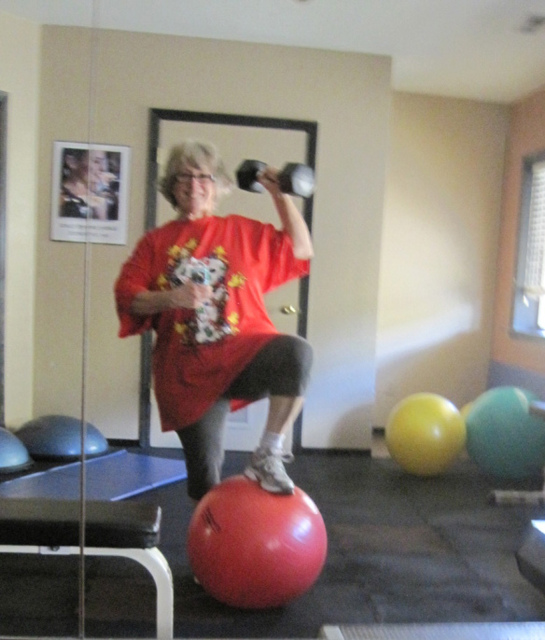
What if you are injured? Or old? Or out of shape? Check, check, and check. Been there, done that. I wrote about it here--You Can Always Do Something!
Exercise is going to take time. There's no two ways about it. But changing my intention and attitude about it will go far in helping me to incorporate it into my life without resenting the time it takes. And eventually, I came to realize that I did love exercise.
This week's puzzle is actually an sample for Judith Baker Montano's Underwater Fantasy class that she will be teaching August 23-27, 2013 in La Veta, Co. In her class, Judith teaches you to think like a painter, but work like a fiber artist.
Click here to learn more about Judith's class.
Underwater Fantasy - 96 pieces non-rotating
Underwater Fantasy - 300 pieces non-rotating
Underwater Fantasy - 35 pieces rotating
Underwater Fantasy - 96 pieces rotating
Underwater Fantasy - 300 pieces rotating

Did you know that AccuQuilt carries special dies just for rag quilts? You no longer have the hassle of hand-cutting all that fringe and they come in fun shapes such as stars, flowers, hearts, and circles. What a quick and easy way to make a baby quilt. Take a look.
Margo has some great tips for working on the applique border of the Two of US, the TQS BOM for 2013. She'll show you how she "downsized" her border for her smaller version of the quilt and talks about different ways to create applique vines.
To see more of Margo's videos, please visit her classroom.
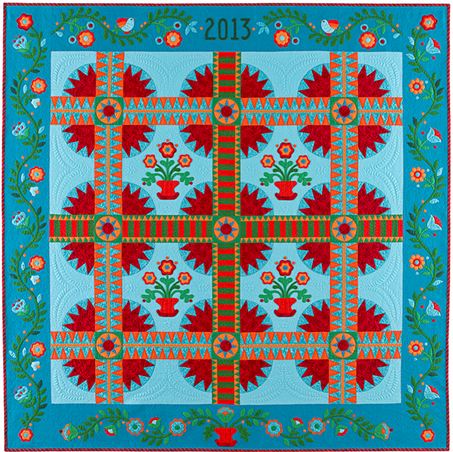
This month Sue will show you how she makes bias vines and stitches outside points on appliqué patches. A light box will be very helpful for positioning the appliqué patches on the border. (Sue recommends Gagne Porta-Trace light panel) If you do not have a light box, you will need tracing paper (18˝ x 50-yard roll 8.0 lb. white from Utrecht Art supplies).

Created by Caryl Bryer Fallert, this quilt measures 93" x 65" and is machine pieced and quilted. Caryl based her design on pictures of people doing yoga or pilates poses. Checks and Balances won first place in "Art-People, Portraits, and Figures" at IQF Houston, 2011.
Caryl writes extensively about the creative process for this quilt on her website, www.bryerpatch.com.
Click here to go to Caryl's website and learn more about the quilt.
How do you quilt bodies and what are the hidden figures?
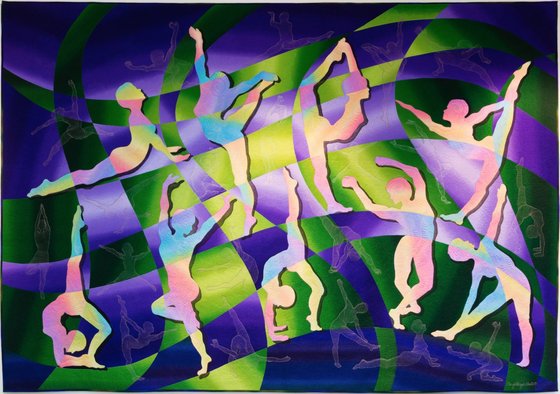
In Episode 1212: Something Old, Something New: Early Influences and Fresh Stitches - Judith Baker Montano is distorting stitches, creating layers and using scrim, cheesecloth and other materials to create wonderful effects.
Also in a segment taped in Sisters, OR, we meet UK quilter, Karin Hellaby, who offers a brief history of Pineapple quilts and shows her "Sew Simple" technique for creating a Pineapple block.